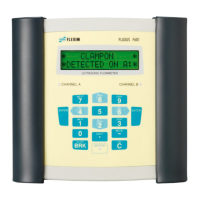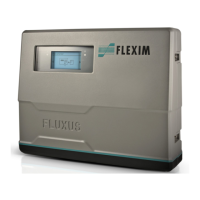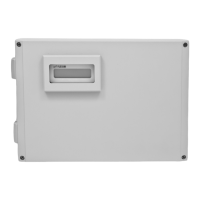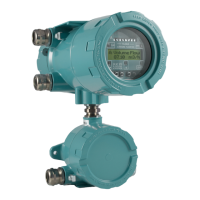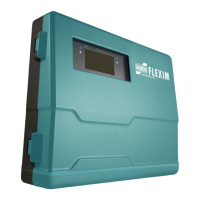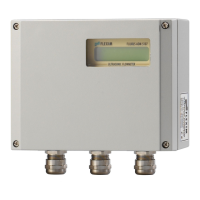21 Heat flow measurement
FLUXUS F60* 21.1 Calculation of the heat flow
207
UMFLUXUS_F60xV5-0EN, 2017-10-16
For the heat flow measurement, 2 different measuring modes can be used:
• The normal measuring mode can be used if in a heating application the transducers are
mounted on the return line.
• The BTU mode facilitates the measurement with other configurations (e.g., if the trans-
ducers are mounted on the supply line or in a cooling application) and offers additional
units of measurement for the heat flow.
A temperature correction value (offset) can be set for each temperature input.
If the supply or return temperature is known and constant during the whole measure-
ment, this temperature can be entered in the transmitter as a constant value. In this case,
the corresponding temperature probe does not need to be connected.
If the supply pressure is constant or can be measured with an additional input, the heat
flow can be determined for a fluid that is vaporous in the supply line, see section 21.6.
In the SuperUser mode, it is possible to define a temperature-based cut-off flow of the
heat flow, see section 18.8.
The heat quantity is the totalizer of the heat flow.
21.1 Calculation of the heat flow
The heat flow is calculated by the following formula:
Φ = k
i
· · (T
V
- T
R
)
where
The heat coefficient k
i
is calculated from several heat flow coefficients for the specific en-
thalpy and the density of the fluid. The heat coefficients of some fluids are stored in the
internal database of the transmitter.
Φ – heat flow
k
i
– heat coefficient
– volumetric flow rate
T
V
– supply temperature
T
R
– return temperature
